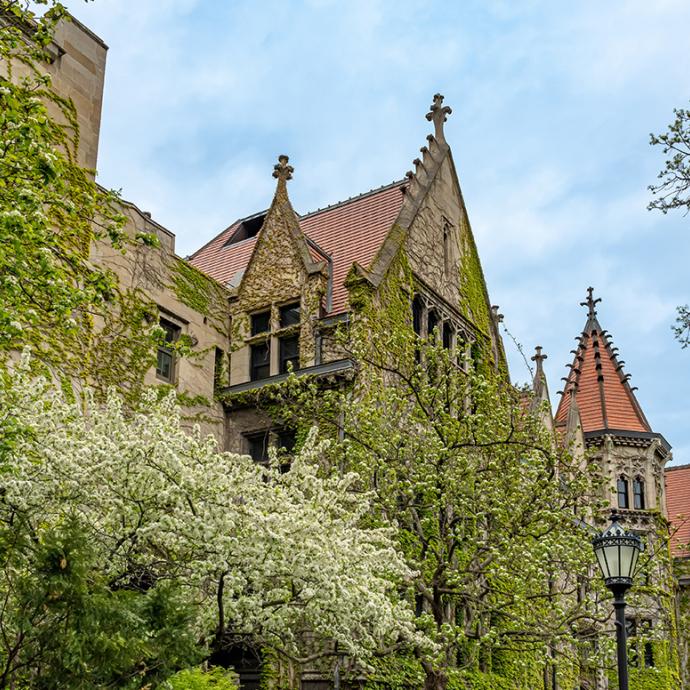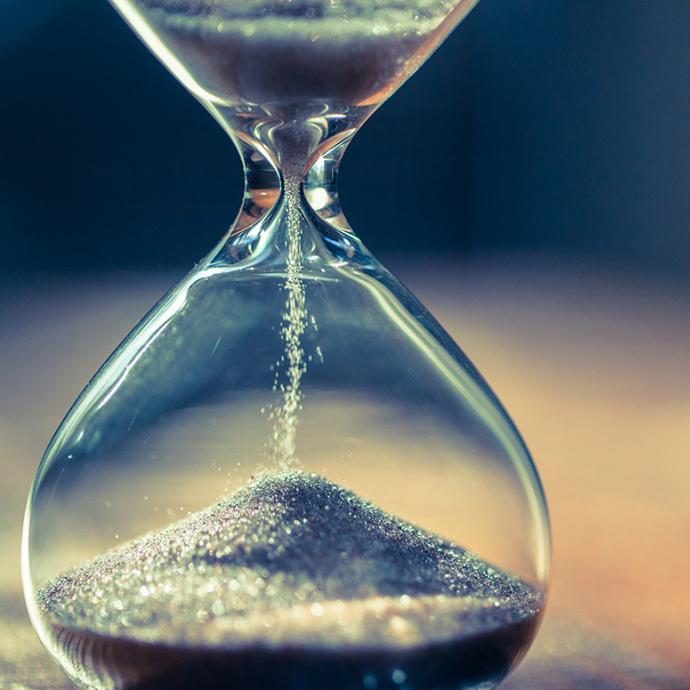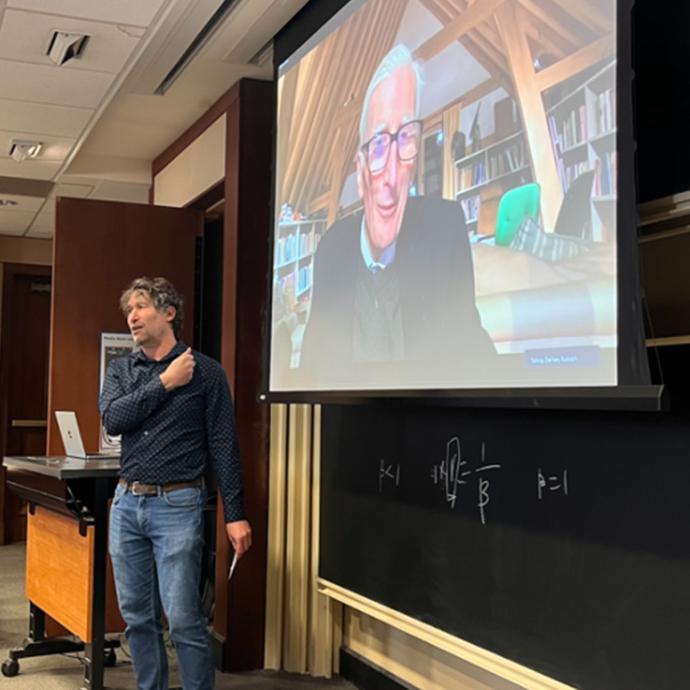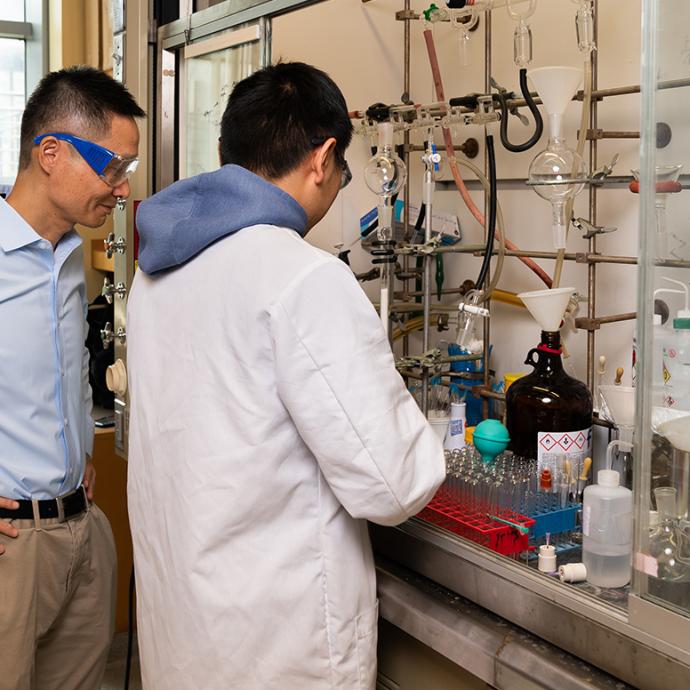On Monday, June 23, the next phase of neutrino physics at Fermilab fell (gently) into place.
The MicroBooNE dectector—a 30-ton, 40-foot-long cylindrical metal tank designed to detect ghostly particles called neutrinos—was carefully transported by truck across the U.S. Department of Energy’s Fermilab site, from the warehouse building it was constructed in to the experimental hall three miles away.
The massive detector was then hoisted up with a crane, lowered through the open roof of the building and placed into its permanent home, directly in the path of Fermilab’s beam of neutrinos. There it will become the centerpiece of the MicroBooNE experiment, which will study those elusive particles to crack several big mysteries of the universe.
[view:story=block_1]
“Our previous experiment, MiniBooNE, saw something unexpected in the data that could be hinting at something new and exciting going on with neutrinos,” said MiniBooNE/MicroBooNE collaborator David Schmitz, assistant professor in physics at the University of Chicago. “The MicroBooNE detector is designed to follow up on that result by using a new technology, the liquid argon time projection chamber, to greatly improve the sensitivity.”
The MicroBooNE detector will now be filled with 170 tons of liquid argon, a heavy liquid that will release charged particles when neutrinos interact with it. The detector’s three layers of wires will then capture pictures of these interactions at different points in time and send that information to the experiment’s computers.
Using one of the most sophisticated processing programs ever designed for a neutrino experiment, those computers will sift through the thousands of interactions that will occur every day and create stunning 3-D images of the most interesting ones. The MicroBooNE team will use that data to learn more about how neutrinos change from one type (or “flavor”) to another, and narrow the search for a hypothesized—but as of yet, never observed—fourth type of neutrino.
“The scientific potential of MicroBooNE is really exciting,” said Yale University’s Bonnie Fleming, co-spokesperson for the MicroBooNE experiment. “After a long time spent designing and building the detector, we are thrilled to start taking data later this year.”
MicroBooNE is a cornerstone of Fermilab’s short-baseline neutrino program, which studies neutrinos traveling over shorter distances. MINOS and NOvA, which send neutrinos through the Earth to Minnesota, are examples of long-baseline experiments. In its recent report, the Particle Physics Project Prioritization Panel expressed strong support for the short-baseline neutrino program at Fermilab.
The P5 panel was composed of members of the high-energy physics community. Their report was commissioned by the High Energy Physics Advisory Panel, which advises both the Department of Energy and the National Science Foundation on funding priorities.
The detector technology used in designing and building MicroBooNE will serve as a prototype for a much larger long-baseline neutrino facility planned for the United States, to be hosted at Fermilab. The P5 report also strongly supports this larger experiment, which will be designed and funded through a global collaboration.
To read the P5 report, visit this link: http://usparticlephysics.org/p5.
Schmitz, who joined the UChicago faculty in 2012, has been involved in experiments on Fermilab’s neutrino beam since it was built in the early 2000s. His Chicago group leads a major effort to continue to expand the short-baseline neutrino program at Fermilab by building a second similar detector close to the source.
“This multiple-detector configuration will significantly expand upon the physics sensitivity of MicroBooNE alone, in particular for searching for a new kind of ‘sterile’ neutrino,” Schmitz said. The theoretical sterile neutrino would interact only with gravity, but not with the other three fundamental forces operating in the universe. The new detector, known as “LAr1-ND,” is going through the approval and funding process and should be ready for data collection by 2018.
The MicroBooNE collaboration consists of more than 100 scientists from 23 institutions. UChicago members of the collaboration include postdoctoral scholar Joseph Zennamo, graduate students Will Foreman and Johnny Ho, and undergraduates Davio Cianci and Nate Norton.










 —Prof. Chuan He
—Prof. Chuan He
